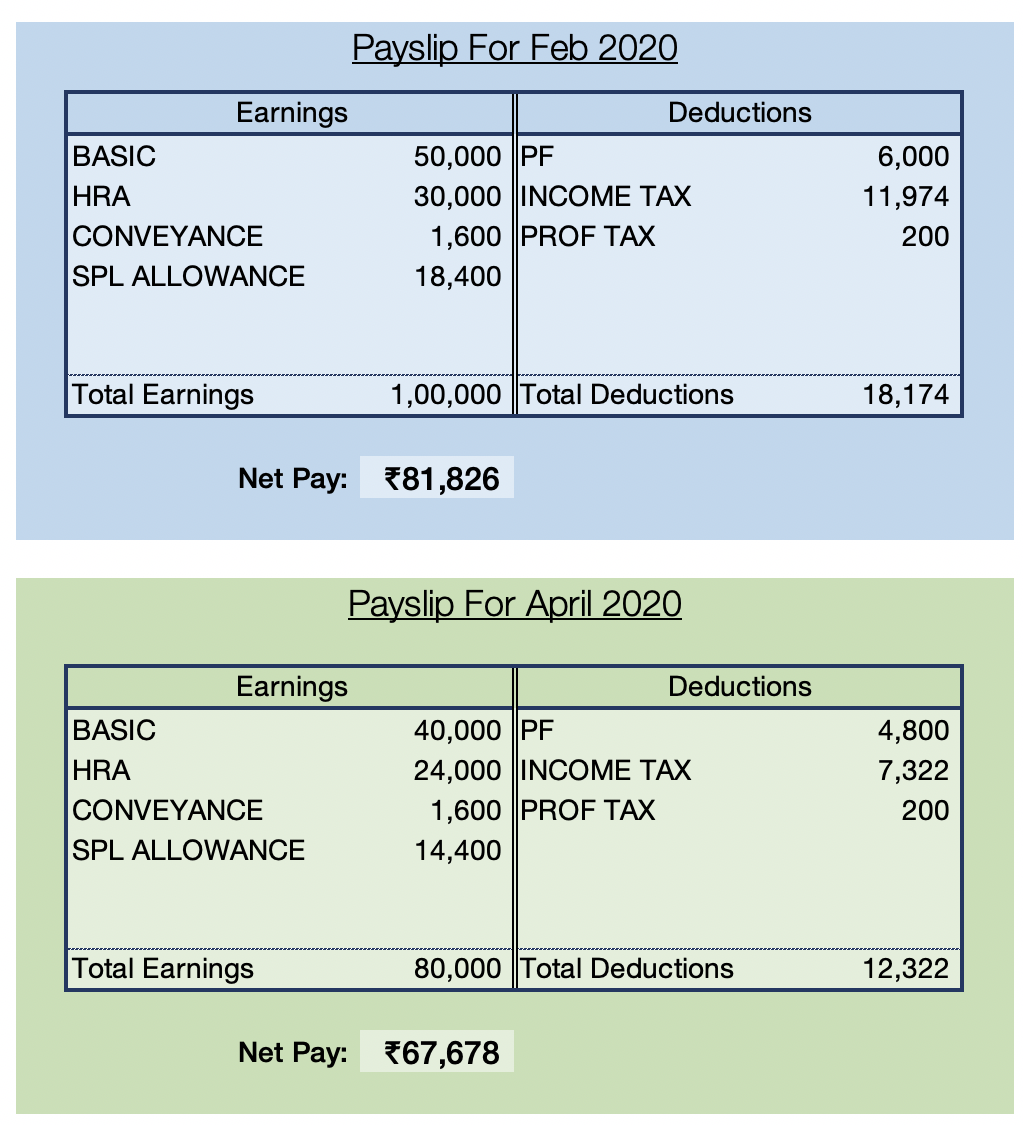Most companies are implementing salary cuts. If you too are considering it, this article will help you make an informed decision on the execution method that works best for your organization.
There are at least three methods of implementing salary cuts, each with its pros and cons.
The payroll process is complicated because there are so many rules and compliances to keep in mind when paying your employees. You need to be mindful of these concerns when effecting salary cuts. Some of these concerns are:
- There is a government order that has decreed that salaries should not be reduced and employees should not be removed from service.
- The salary after the pay cut should not fall below minimum wages.
- Ensure the PF, Gratuity, and ESI salary components are not changed when effecting the pay cut. Doing so not only affects the retirement funds of the employee but may also warrant government scrutiny due to a sudden reduction of retirement funds. Staying compliant with law is of paramount importance.
- Ensure employer contribution to PF or ESI does not exceed the mandate. It's an additional burden to the employer.
- If the pay cut method leads to lower income tax, it will lead to more take-home pay for the employee.
- If the pay cut method causes an excess tax deduction, employees may not like the result.
- Communicating the pay-cut details to employees should be easy. Employees should have clarity on how much cut has occurred. Otherwise, you may drown in employee clarifications.
- It should not be cumbersome for the payroll administrator to implement the cut.
- In the case of salary reinstatement, it should be easy to pay back the arrears to the employees either in full or in instalments.
Phew! That's a lot of things to watch out for!
Before you proceed further, you first need to clear concern #1 above, which is a major showstopper. It's advisable to consult your legal team or labour consultant before talking any actions.
Concern #2 can be managed by not doing pay-cuts for those employees below a certain threshold, say 25,000.
Assuming the first 2 concerns are managed, let’s examine three ways of going about the process of pay cuts and how each method fares in handling the various concerns.
1. CTC Reduction Method
It is one of the simplest methods to implement. You reduce the overall CTC by adjusting the various components. Start with the "Special Allowance" component and avoid modifying the Basic / DA components to prevent impacting the statutory components.
There are many companies that don’t follow a CTC based compensation plan. In such a case, this method cannot be used.
For example, let employee X have a monthly CTC of ₹1,00,000. It the company decides to cut 20% of the salary, the CTC package would be restructured to bring down the total earnings by 20%. You can see in the payslips below that almost every component is changed in the process.

Passes: 4, 5, 6
Fails: 3, 7, 8, 9
2. Deduction Component Method
In this method, you add a new deduction component called Covid Deduction. It's straightforward for an employee to understand the cut in the payslip but has many drawbacks.
For example, let employee X have a monthly CTC of ₹1,00,000. It the company decides to cut 20% of the salary, we deduct 20% of the monthly CTC. Nothing changes on the income side. There is a higher incidence of tax. The take-home pay is the lowest amongst the 3 methods.

Passes: 3, 7, 8, 9
Fails: 4, 5, 6
3. Negative Income Method
In this approach, we use a negative income component called “Covid Deduction” to implement the pay cut. The method has been designed to cater to all possible concerns. While it may look like there is just one component to add, the actual implementation is a bit involved and requires some expert assistance.
For example, let employee X have a monthly CTC of ₹1,00,000. We have a negative income of -20,000 added to the CTC package. Except for the newly added component and the income tax component, nothing else changes.

The take-home pay is higher than the deduction method. The only problem with this method is that the negative income concept is a bit disorienting. If you are a greytHR user, there is a neat little trick that can make the payslip read better as can be seen in the below picture. With this, the employee communication problem is taken care of.

Passes: 3, 4, 5, 6, 7, 8, 9
Fails: None
Our Verdict
Here’s a summary of the 3 methods:

If you are planning to have a temporary salary cut or deferment, the Negative Income method is highly recommended. However, if you are planning a permanent cut for the foreseeable future, then the CTC Reduction method is the way to go.
We are eager to hear from you if you have any questions or even better ideas for implementing the salary cuts.
Our greytHR customers can raise a support ticket indicating the preferred method of execution and our team will set you up.









